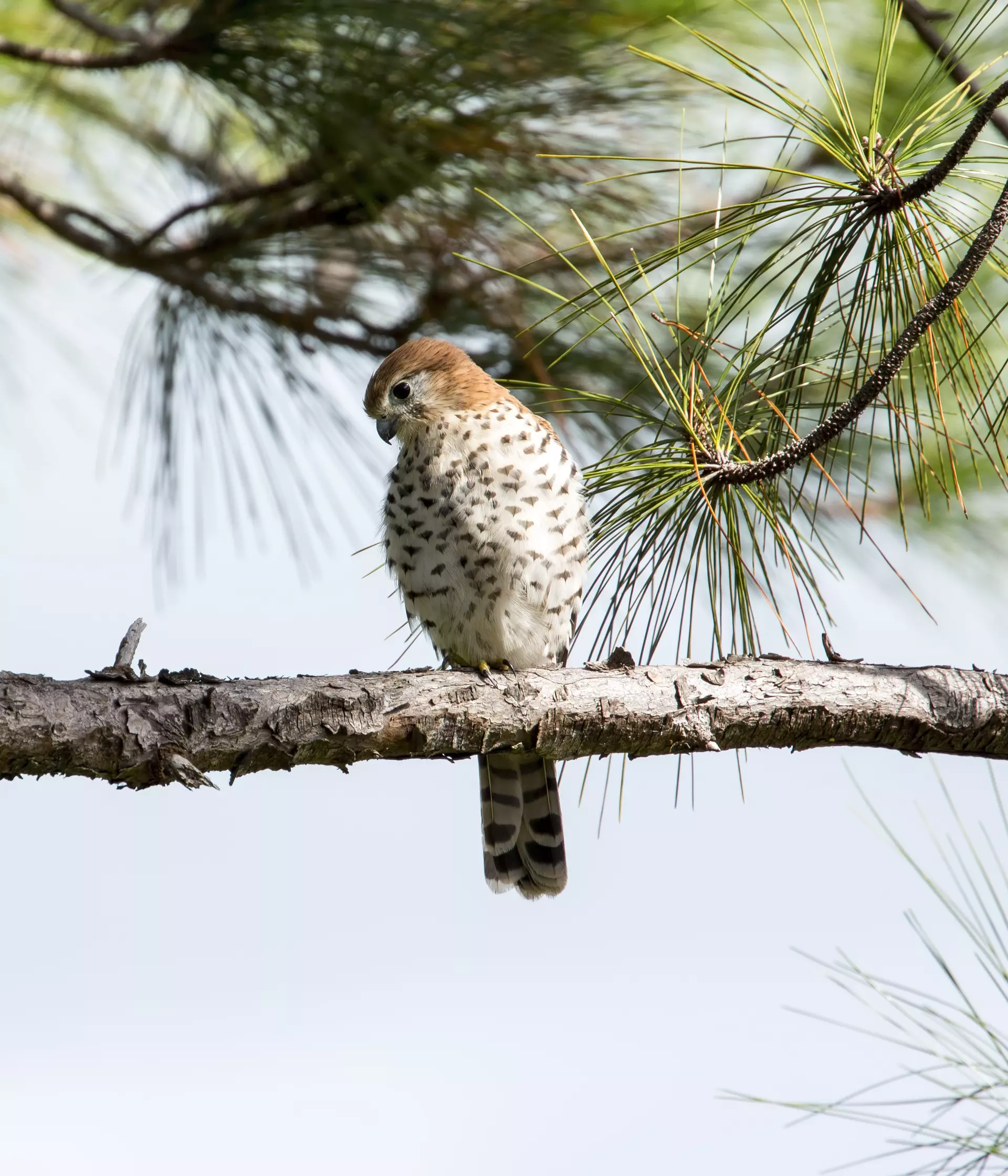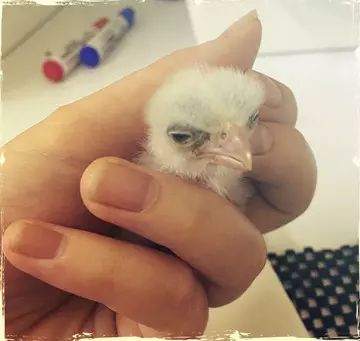
Once the rarest bird in the world, Mauritius kestrels are gradually returning to the forests and mountains of Mauritius.
Jaz Sinclair, tropical bird keeper at London Zoo, tells us about her time as part of an incredible conservation project, and what it was like to live cheek-to-beak with a lot of lively hatchlings – from serving up rodent three ways, to running a ‘kestrel crèche’.
What exactly is the Mauritius kestrel?
Mauritius kestrels are such a special bird – they’re a small bird of prey that stand around 20cm tall and weigh around 200g. They have a pattern like rows of hearts on their chests and are so quiet you'd be very lucky to spot one in the wild.

They sound beautiful, but why do they need our help?
The project started when the number of wild kestrels dropped to just four in 1974 – at that time, they were considered to be the rarest bird in the world. This was due to extensive habitat loss; the introduction of non-native predators like cats, rats and mongoose; and the use of a pesticide called DDT, which causes the birds to lay thin-shelled eggs. Since then, numbers have risen into the hundreds thanks to collaborative efforts by organisations including the Mauritian Wildlife Foundation and Durrell, and conservationist Carl Jones, supported by ZSL. But there is much more to be done.
Tell us about the conservation project – how does it work, and what was your role?
Clutches of eggs are taken from selected pairs for artificial incubation and hand rearing. Usually the pair will rear a section clutch themselves, doubling the number of chicks produced in a breeding season.
Birds are reared in 'crèche' groups, before being moved to an outside aviary then on to a release site, ready to fledge the nest.
To help kestrels in the wild, mongoose-proof nest boxes are put up in trees, and the birds are trained to come to a whistle so they can be supplement fed to help sustain the population.
Our job as ZSL keepers was to incubate the eggs collected by field staff and hand rear the chicks, and teach them the whistle recall training and how to rip apart food for themselves.
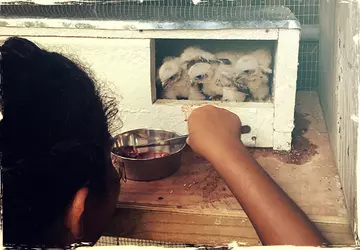
Can you describe a typical day at work?
We’d start by preparing food for the first feed of the day at 6am.
For youngsters we would give finely chopped organs, meat and bone, and prepare progressively larger sizes up to large carcasses. Food prep was definitely not my favourite job! The birds were all weighed first thing and fed throughout the day until 10pm.
Continued from your Back from the Brink email...
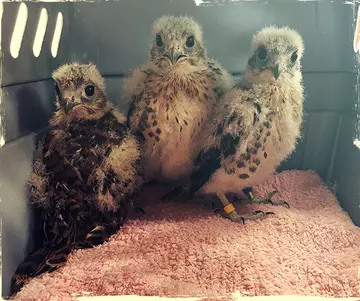
That sounds intense! Where did you sleep? Did you get any time off to enjoy being on the island?!
When they got a little older we would drop to three feeds a day. I might work from 6am to midday… then I’d be able to take a walk on the beach or swim or kayak out to the coral reef (the GDEWS aviaries where we reared the birds is right on the coast at Black River), or hire a bike and cycle into the Black River National Park, where one of the populations of kestrels lives, before last feed at 6pm.
During the first year I worked on the project I slept on a mattress on the floor of the incubation room; I would fall asleep to the noises of the chicks chirping themselves to sleep. The next year we were much more confident with the birds and their routine and had streamlined the hand rearing process, so I had more time to relax and enjoy being in Mauritius!
What were the best bits of your job?
I was lucky enough to do some field work with the kestrels at the release site. One of my favourite memories is turning up after a storm to find a group of windswept, soggy kestrels scattered around their nest area; all on the floor, shouting for food. They rely on conservationists to act like parents, to tell them to get back in the nest box and eat a good meal. We picked the chicks up and climbed to the nest box and put them back inside to dry off.
Watching them learn life lessons is amazing, on a nice sunny day the birds can be found hunting down dry leaves, jumping on them, holding them in their claws and ripping them, making sure they are definitely dead. A good game and good practice for later life!
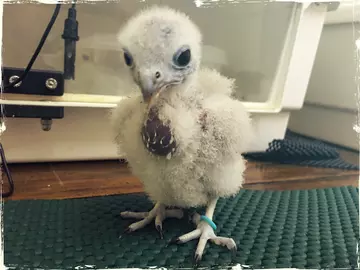
So many fascinating animals around the world are under threat, why do birds deserve our attention?
I've always loved birds and I feel like they are often overlooked, people generally say they are quite boring. I've never understood this, our birds can be flamboyant, dramatic, angry, and hilarious all in a day. They fulfil so many niches in the ecosystem and they are so varied in their biology and habitat. You could spend a lifetime learning about them and still never scrape the surface of everything there is to know.
Finally, what are your hopes for the kestrels – and conservation work – in the future?
I think it’s really important that organisations work together like this, providing expertise for a common goal. This project is a great example of how a species has been brought back from the brink of extinction, and how we need to support populations over decades until the environment is suitable.
It's not a quick fix – probably hundreds of years of work – but we are becoming more and more aware and concerned with the importance of the natural world, and I think that positive change has already started.
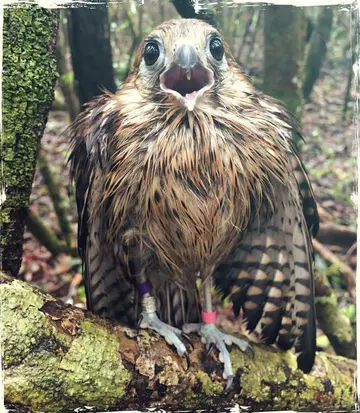
Look out for your Back from the Brink emails, with conservation stories from the field and our Zoos, in your inbox every month.
